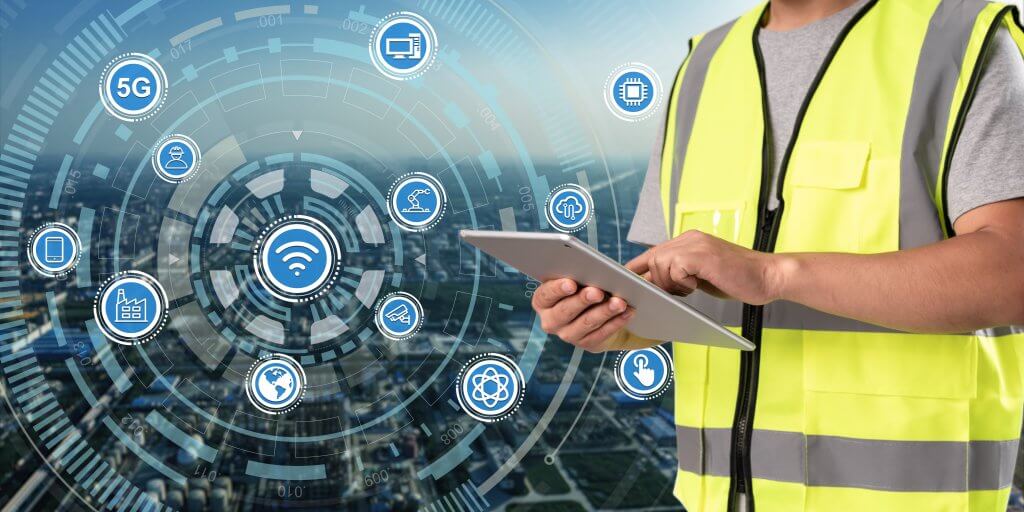October 31, 2024
Introduction
When the average person, worker, tenant, or customer looks at a facility, they see a sedentary structure sitting in the same place every day, that doesn’t inhale, exhale, or speak. But to a facilities manager, that same building is a living, breathing organism with a distinct set of needs. Yes, facilities have needs, and the responsibility of a facility manager and their team is to seamlessly manage them without impacting the productivity of other operations silos.
Tried and true methods have historically been the foundation of facility management, and some still have a place. But with organizations and their leaders viewing facilities as assets, pillars of a brand strategy, and investments, an infusion of fresh ideas that align with this philosophy is necessary: fresh ideas like the Internet of Things (IoT), a technological mindset that is taking facility management to the next level.
What is the IoT?
If there was ever a solution tailor-made for facilities, it has to be the IoT. But what is it? By definition, the IoT is a network of physical devices, appliances, machines, vehicles, and other sensor-driven objects that are used to collect and share valuable data. That data helps determine usage rate trends, build maintenance schedules, locate and keep track of valuable assets, and build a stable facilities maintenance program.
The IoT and Facility Management
Organizations and their facilities can benefit from the IoT in several ways including the following
- Increases maintenance integrity: When it comes to a facility, knowledge is definitely power, and knowledge is what IoT provides the professionals charged with managing and maintaining this critical business asset. Whereas in years past, managers relied on assumptions and guesswork, using IoT solutions, they’re able to accurately predict when an asset will need servicing and plan accordingly. The insights provided through IoT technologies help professionals and building owners save valuable resources, including personnel allocations and potentially unnecessary capital investments for costly repairs.
- Improves energy efficiency: Saving the planet and becoming energy efficient is a dream every facility manager aspires to achieve, and the IoT makes that dream a reality. Real-time monitoring of HVAC is driven by sensors and controls, but data is the driver that feeds them. Data like occupancy detection analyses tell the system what temperature to heat or cool to, based on the number of persons occupying that space at a given time. The IoT can even track weather trends to help facility managers plan future resource allocation efforts.
- Helps build a better work environment: There is a direct correlation between the work environment and worker performance. Production, collaboration, creating critical synergies, employee retention, and a host of other critical workplace factors are shaped by the environment, and IoT is an integral part of that mix. Using the technologies that power this solution set, facility managers can simplify the workplace, eliminating unnecessary processes, improving performance, and setting the stage for employee success. Even if an employee is working remotely, IoT plays a pivotal part in that dynamic, providing access to key data at all times of the day, no matter where they reside.
- Lowers waste production: As the race to save the planet quickens, waste management is becoming more of a hot-button issue with facility managers than ever. Producing waste in any form or fashion means that at some point, removal is necessary and IoT helps facility managers build and optimize recycling and removal programs that limit the impact on the environment. Using IoT, facility managers can track trends and streamline their efforts, reducing harmful emissions and contamination while increasing air quality.
- Monitors assets: Facilities are large and busy environments. With so much going on, storage space comes at a premium, and keeping track of assets can be challenging. Using IoT-powered sensors, facility managers can quickly locate an asset and save valuable time and resources that they can allocate to other need areas to help grow the business.
Conclusion
Facilities are more than just structures or places where workers assemble, produce and leave; they’re actually assets, living assets that require proper maintenance and attention to maximize the investment and continue adding value. Older, proven methods remain viable, but with organizations looking for every conceivable advantage in this ultra-competitive global economy, every opportunity for improvement warrants investigation, and that includes technologies like the IoT.
Save time and minimize risk with the most trusted contracts in the construction industry – powered by AIA Contract Documents’ next-generation platform, Catina. Request a Demo Here.
AIA Contract Documents has provided this article for general informational purposes only. The information provided is not legal opinion or legal advice and does not create an attorney-client relationship of any kind. This article is also not intended to provide guidance as to how project parties should interpret their specific contracts or resolve contract disputes, as those decisions will need to be made in consultation with legal counsel, insurance counsel, and other professionals, and based upon a multitude of factors.

